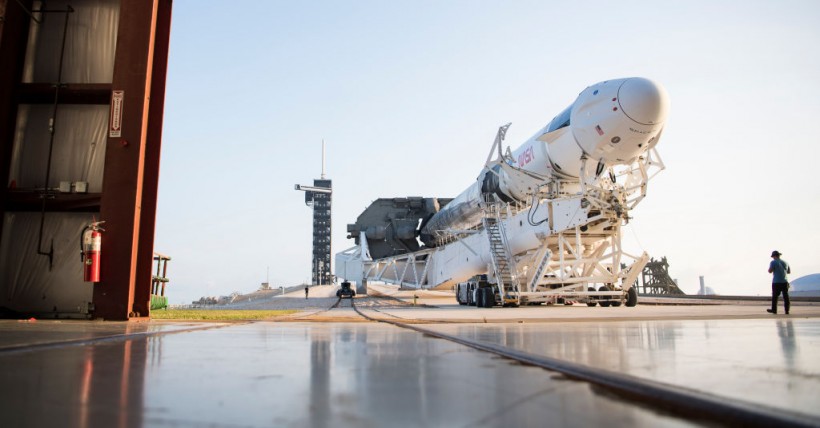
(Photo : Aubrey Gemignani/NASA via Getty Images)
COVID-19 has more than patients struggling from it. SpaceX cannot lift off due to an ongoing pandemic that needs precious oxygen supplies. The space lifter uses oxygen as a component for fuel for its lifts off and requires vast amounts of it, but its need is a big problem.
Thus, having not enough oxygen for the massive boosters has grounded the plans to go ahead. Priority is given for COVID-19 use is more important for now.
Liquid oxygen (LOX) has been redirected to hospitals because coronavirus threatens to spread far and wide. Consequently, launch providers like SpaceX and United Launch Alliance (ULA) suddenly placed themselves in a delicate situation since LOX is needed to meet orbit.
NASA's contract
Officials from the agency revealed this week that shortfalls would affect the corporation's busy launch date. Musk's firm has been given the NASA contract to send crews and cargo lifted off to the International Space Station (ISS), reported Express UK.
Falcon 9 will be carrying supplies to the orbital lab and ready to launch on August 28, with a 10-day delay. In Florida, the surge of COVID-19 has caused delays in the historic space coast.
On Tuesday, President of SpaceX, Gwynne Shotwell, said that the lack of needed LOX supplies would affect the planned launches. She added that oxygen would be prioritized for hospital use, which is needed most, in the 36th Space Symposium in Colorado Springs, Colorado. Shotwell asked if there is spare oxygen from anyone and said to email her.
Read Also: SpaceX Starship SN20 Launch Date: When Is It Scheduled for Full-Fledged Space Flight?
Extra oxygen needed
Most of the liquid oxygen used to blast a rocket into orbit is what patients need most and charges respirators for those dying from COVID-19. SpaceX's signature Falcon 9 rocket uses a mix of cryogenic LOX and rocket-grade fuel to reach orbital altitude, cited News Beezer.
Merlin engines of the first stage that are reusable will use 39,000 pounds of liquid oxygen with 25,000 pounds of kerosene. It will generate about 1.7 million thrust pounds at sea level. The engines are used to revector the first stage before its reentry stage, and the crucial part acts as a brake when the vehicle starts landing, said SpaceX.
The rocket's second stage, which will boost its cargo into the prescribed orbit, used one Merlin Vacuum engine. Compared to the other stage, it used 7,300 gallons of LOX and 4,600 gallons of kerosene too.
According to the Musk space firm, the Starship is still being developed by the company and will use oxygen and methane as fuel for the rocket. But, in UK News Today, the increase of LOX will only last for two weeks at most. Mara Bryant, an Adventist Health White Memorial Hospital officer, said that a short supply of oxygen is a COVID-19 nightmare.
Shotwell added that oxygen is needed to keep people breathing while infected by the virus. The hardness of breath is a recognized symptom that can be deadly. In the worst-case scenario, many can only breathe with a machine. SpaceX cannot lift off due to the ongoing pandemic as the precious LOX keeps people alive but makes the space firm's deadline problematic.








